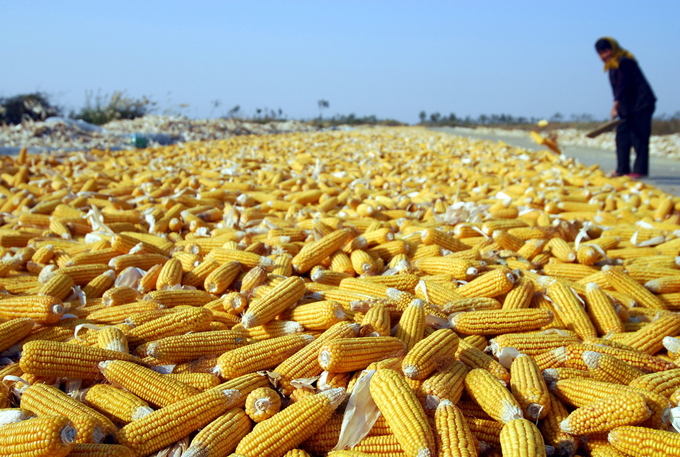November 27, 2025 | 14:22 GMT +7
November 27, 2025 | 14:22 GMT +7
Hotline: 0913.378.918
November 27, 2025 | 14:22 GMT +7
Hotline: 0913.378.918

A Chinese farmer dries corns on the outskirts of Qingdao city, Shandong Province. Photo: Oriental Image via Reuters Connect.
The Ministry of Agriculture and Rural Affairs awarded safety certificates to the 17 crop varieties, according to a document on its website on Tuesday.
The approved gene-edited crops include two soybean varieties, and one each of wheat, corn, and rice.
The approved varieties include seeds from Beijing-based feed group Dabeinong (002385.SZ), opens new tab and China National Seed Group, a subsidiary of seeds and pesticides maker Syngenta Group.
Unlike genetic modification, which involves inserting foreign genes into a plant, gene editing alters existing genes to enhance or improve the plant’s traits. Some scientists view gene editing as less risky than genetic modification.
China has also authorised the import of an insect-resistant and herbicide-tolerant GM soybean variety from the German chemicals firm BASF exclusively as a processing material, the ministry added.
Over the past year, the country has increased approvals for higher-yielding GM corn and soybean seeds to raise domestic production and reduce grain imports.
China mostly imports GM crops such as corn and soybeans for animal feed, while cultivating non-GM varieties for food consumption. Many Chinese consumers remain concerned about the safety of GM food crops.
The safety certificates for the newly-approved varieties are valid for five years, starting from December 25, according to the ministry document.
Reuters

(VAN) On the morning of November 27 in Beijing, Minister Tran Duc Thang and the Deputy Commissioner General of the General Administration of Customs of China signed a protocol on fresh jackfruit exports.

(VAN) As floodwaters recede, a vast network of irrigation works across eastern Gia Lai is emerging in a state of severe disrepair, with extensive damage demanding urgent restoration ahead of the 2025-2026 winter-spring cropping season.

(VAN) The conference reviewing three years of implementing Decision 911 identified the need to prioritize improving marine environmental quality and promoting sustainable fisheries development.

(VAN) Le Hoai Trung, Member of the Communist Party of Viet Nam Central Committee and Minister of Foreign Affairs, held talks with Vi Thao, Chairman of the Guangxi Zhuang Autonomous Region (China) this week.

(VAN) The Mekong River Commission adopts the 2026 - 2030 Strategic Plan with a people-centered approach.
/2025/11/26/1720-1-200855_132.jpg)
(VAN) Viet Nam and Japan have many conditions to expand cooperation on climate change adaptation, particularly in disaster risk management based on advanced technologies.

(VAN) The strong development of digital technology and artificial intelligence is opening up opportunities to transform science and technology into a 'Magic eye' for disaster forecasting and early warning.